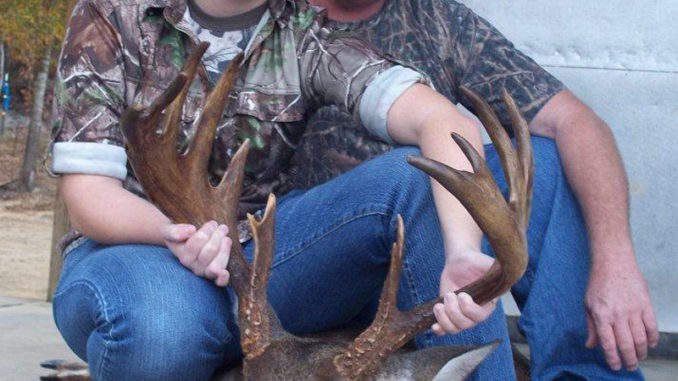
Clay Creek Hunt Club, Chesterfield Co., S.C.
Minutes from Charlotte and just south of the state line in Chesterfield County lies Clay Creek Hunting Club. Consisting mostly of planted pines, agriculture fields, oak ridges swamp and creek bottoms, Clay Creek has almost the perfect collection of habitat types to support a wide range of game species, but trophy whitetail bucks are the primary emphasis for this seasoned group of hunters, and they see the results of their work in a real way.
For more than 30 years, the club’s members have invested countless hours perched in tree stands, scouting bottomlands and providing key nutrition for their deer herd. Yet, a gunshot echoing across the property is a rare event these days — but that’s definitely by choice. Clay Creek is a family-oriented organization that places a significant emphasis on producing true, mature animals on their properties.
Beginning 15 years ago, the club enacted trophy management guidelines in an effort to improve their capacity to grow something exceptional. And according to Heath Mills, the club president, they are beginning to reap rewards of their labor.
“We are starting to see some good results,” Mills said. “Two years ago, my 19-year-old daughter, Leslie, hunted after a good one hard for two seasons until she finally got him. He was a 15-pointer that weighted 225 pounds and had a net score of 169 2/8 on the Boone and Crockett scale. We kill one every year or so that we feel is a true trophy.”
Luckily, Clay Creek is in a highly productive area in both woodland and agriculture landscapes. Much of the land adjoining the club’s 1,800 acres is agriculture land, featuring rotations of corn, soybeans and wheat. Years ago, much of the adjoining agriculture lands were woodlands and part of their hunting lease, but depressed land value and high demand for farmland promoted conversion of over half of the lease into the existing farm fields.
Either way, the woodland habitat is rich, and the nearby agriculture is more than sufficient to keep the herd fat and happy. Regardless, the club puts out minerals every year to encourage antler growth and mass.
According to Mills, their primary trophy management tactic revolves around killing does and letting the bucks reach maturity.
“You got to let them walk to have good bucks. Age is the most important component,” he said. “I haven’t killed a buck in seven years if that tells you anything, and I hunt a lot.”
Mills said Clay Creek loses about half the bucks its members pass up every year to surrounding clubs, but the other half that stays at home will grow and be there the next year.
Since they discontinued their food plot program a few years ago when most of their land was converted to agriculture land, December for club members is spent in a deer stand.
“December turns out to be our big-buck month during the secondary rut. There are less does available to breed, and the ones that are in season will have a mature buck chasing them around,” he said.




Be the first to comment